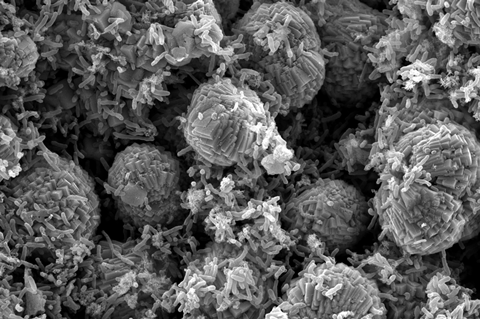For the first time, researchers from University of Alcalá have grown a microbial consortium dominated by purple phototrophic bacteria (PPB) which are fed with electricity to convert CO2 into high protein biomass.

This work, recently published in Microbial Biotechnology, an Applied Microbiology International publication, responds to the growing need to find alternative sources of protein.
The PhD candidate Carlos Manchón explains: “The climate crisis requires rethinking consumption and production dynamics. The food sector is responsible for ca. 25% of current greenhouse gas (GHG) emissions.
“So finding sustainable alternative protein sources from a GHG like CO2 is crucial to addressing the climate crisis, particularly in the aquaculture sector, and purple phototrophic bacteria (PPB) are a well-known candidate.
“PPB are the most versatile microorganisms on earth - not only are they known to interchange electrons with iron-based minerals from natural environments, but they may interchange electrons from an artificially provided electrical current.
“Moreover, their high protein content and ability to produce value-added compounds as bioplastic have placed them in the focus of researchers as a sustainable alternative.”
Dr Abraham Esteve-Núñez says that for the first time an electrode was used to ‘feed’ a microbial consortium dominated by purple phototrophic bacteria on electrical current.
“Our results have shown that the electricity can be the sole source of electrons to effectively grow PPB just from CO2. Furthermore, this study suggests the key role played by purple phototrophic bacteria from genus Rhodopseudomonas in the consortium,” he says.
“Therefore, we have demonstrated the utility of electrical current for the biomass production of purple phototrophic bacteria, a possible alternative protein source in some animal diets, such as fish from aquaculture. Our photoelectroactive consortium of microorganisms suggests the potential of this strategy for scaling up the process using more robust conditions where non-sterility is a requirement.”
The discovery means that rather then being restricted to cultivating purple phototrophic bacteria on chemical substrate for growth, the electromicrobiology-based strategy would allow the production of biomass solely with electricity and carbon dioxide.
“In addition, the use of microbial consortia allows us to operate under non-sterile conditions, reducing the cost of operation and facilitating its implementation on a full scale,” he says.
“The process could be really sustainable considering that i) such electrical current could be generated from a renewable source using solar panels and ii) we are removing a greenhouse gas as CO2.
“The challenge of transferring this scientific discovery into a real application requires a suitable engineering scenario. In our bioe group at University of Alcalá, we are counting on a multidisciplinary team to face the challenge by using an own-design bioreactor configuration in which electricity is provided by fluid-like electrodes. Moreover, to scale up our biotech solution we are counting on new funded PHOTOELECTRA and BIOCO2MET projects for the next three years.”
‘Microbial photo-electrosynthesis: feeding purple phototrophic bacteria electricity to produce bacterial biomass’ is published in Microbial Biotechnology.
This work was supported by the Spanish Ministry of Science, Innovation, and Universities—State Research Agency (AEI) and the European Regional Development Fund (ERDF) through the project METFLUID - Microbial electrochemical reactors based on fluid-like electrodes: a new biotech platform for performing environmental applications. Ref. RTI2018-101974-B-C-21 (MCIU/AEI/FEDER, UE).
In addition, this work was also supported by Madrid Regional Government through the project REMTAVARES. Ref: P2018/EMT-4341.
Carlos Manchon, first author, was funded by the Industrial PhD fellowship programme from the Regional Government of Madrid: IND2020/AMB-17843.
Supporting documents
Click link to download and view these filesFe 1_0002
Image, FileSizeText 20.05 mb
Topics
- Applied Microbiology International
- Aquaculture
- Bacteria
- bioco2met
- Bioengineering
- biomass
- Carlos Manchón
- Climate Action
- Community
- Early Career Research
- electricity
- Food Security
- Food Security & Safety
- Future Technologies
- Future Technologies
- Innovation News
- Microbial Biotechnology
- Microbial Biotechnology
- photoelectra
- purple phototrophic bacteria
- Rhodopseudomonas
- Sustainable Microbiology
- UK & Rest of Europe
- University of Alcalá







1 Reader's comment